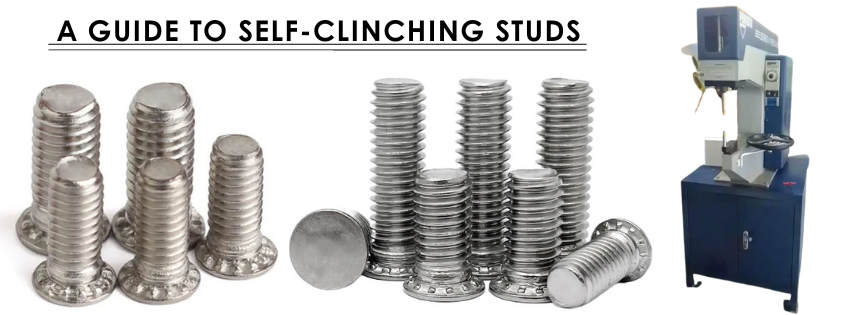Guide to Self-Clinching Studs
Self-clinching studs are specialized fasteners designed to provide strong, permanent threads in thin metal sheets. These studs feature serrations beneath their heads, which are engineered to push the displaced material into the rivet ring when the fastener is inserted into the metal sheet. This unique design ensures that the fastener is securely anchored in place, providing a reliable and durable connection.

Advantages of Self Clinching Studs
Self-clinching studs offer several advantages over traditional fastening methods:
- High resistance to torque loads: Self-clinching studs are able to withstand high levels of torque without loosening or stripping, making them ideal for applications where vibration or movement is a concern.
- No damage to coated surfaces: Because self-clinching studs do not require welding, there is no risk of damaging the surface finish of coated metal sheets. This makes them an excellent choice for sheet metal panels that require a pristine appearance.
- Always perpendicular to the sheet: Self-clinching studs are installed using a simple press-in process, ensuring that the stud remains perpendicular to the metal sheet for accurate and consistent positioning.
- Flush head after insertion: Once installed, the head of the self-clinching stud sits flush with the metal sheet, providing a clean and professional finish. This minimizes the risk of snagging or catching on surrounding components.
How are Self Clinching Studs Installed?
The installation process for self-clinching studs is straightforward and can be completed using a hydraulic press or a manual installation tool. The steps typically involve aligning the stud with the pre-drilled hole in the metal sheet, applying pressure to the head of the stud, and allowing the serrations to grip the surrounding material and pull the fastener into place.
Where are Self Clinching Studs Used?
Self-clinching studs are commonly used in industries such as electronics, automotive, aerospace, and machinery. They are suitable for a wide range of applications, including attaching components, mounting electronic devices, and securing panels and enclosures.
In the electronics industry, self-clinching studs are often used to mount circuit boards, switches, and connectors in electronic devices. Their ability to provide a secure and permanent fastening solution makes them a popular choice for manufacturers seeking reliable connections in space-constrained environments.
In the automotive industry, self-clinching studs are used to attach components such as sensors, brackets, and panels. Their resistance to vibration and torque loads makes them an ideal choice for applications where reliability is critical.
Conclusion
Self-clinching studs offer a reliable and efficient fastening solution for thin metal sheets, providing strong and permanent threads without the need for welding. With their high resistance to torque loads, ability to maintain a flush finish, and compatibility with coated surfaces, self-clinching studs are a versatile option for a wide range of industries and applications. Whether you are looking to secure components in electronics, automotive, aerospace, or machinery, self-clinching studs can provide the durable and consistent connection you need.

